<< Previous | Displaying results 1-50 of 544 for "world war I" | Next >>
The trauma of WWI would profoundly shape the attitudes and actions of leaders and ordinary people during the Holocaust. Learn more about the aftermath of the conflict.
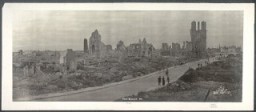
The experiences of World War I and its aftermath would profoundly shape the attitudes and actions of leaders and ordinary people during the Holocaust.
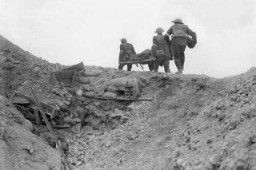
Learn about trends that developed during and immediately after WWI that brought antisemitism, including its racist variant, into the mainstream of European politics.
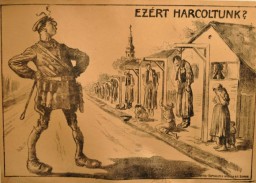
Mass atrocities and genocide are often perpetrated within the context of war. Learn more about World War I and the Armenian genocide.
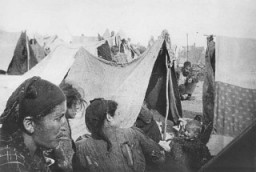
After the devastation of WWI, the victorious western powers imposed a series of treaties upon the defeated nations. Learn about the treaties and their impact.
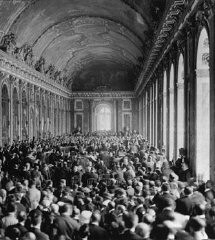
Learn about Adolf Hitler's experiences during World War I and his ideological development after the war.
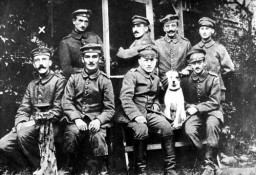
Explore a timeline of key events in the history of World War I and its aftermath. Learn about the conflict and its divisive peace.

One of the oldest cities in Poland, Kalisz played a pivotal role in Polish Jewish history. Learn about the Jewish Community in Kalisz from the 12th Century to WWI.
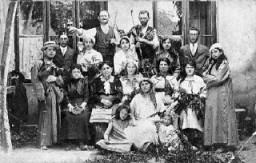
Learn about the Jewish community of Munkacs from the eighteenth century through the aftermath of World War I.
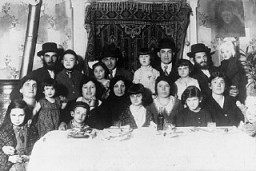
Scene of trench warfare: an abandoned British trench which was captured by German forces during World War I. German soldiers on horseback view the scene.
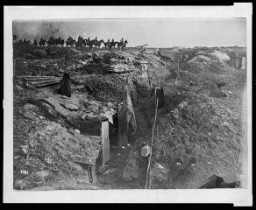
The trauma of WWI would profoundly shape the attitudes and actions of both leaders and ordinary people during the Holocaust. Learn more about the war and its aftermath.
Belgian refugees in Paris during World War I, the first great international conflict of the twentieth century. Paris, France, 1914.
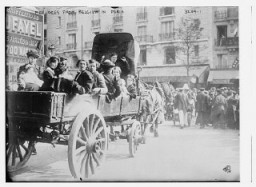
A man, women and a child sort through the rubble of a Polish home destroyed during World War I. Photograph taken ca. October 18, 1915.
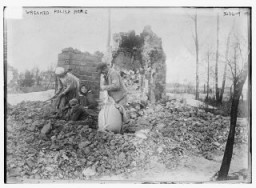
This 1919 photograph shows World War I destruction in Ypres, Belgium.

The armistice that ended the hostilities of World War I was signed in a railcar in the Forest of Compiègne. The railcar belonged to French Marshal Ferdinand Foch, the commander of the victorious Allied forces. © IWM Q 61172
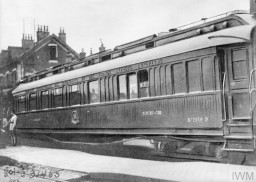
A crowd in front of the Berlin Cathedral (Berliner Dom) cheers the declaration of World War I. Berlin, Germany, August 1914. Many enthusiastically believed that World War I would be over quickly. Instead, the war became a stalemate of costly battles and trench warfare. It lasted for years and was the first great international conflict of the twentieth century. The impact of the conflict and its divisive peace would reverberate in the decades following.
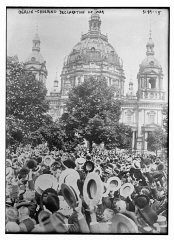
Refugees in the Gare de Lyon in Paris during World War I. Paris, France, photograph taken ca. 1914–15.
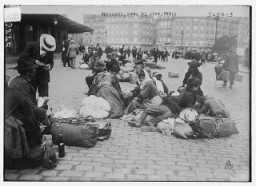
Ruins of the library in Louvain, destroyed during World War I. Louvain, Belgium, ca. 1914–1915

A French army ambulance during World War I. This photograph was taken ca. 1914–1915.
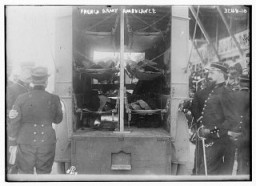
German soldiers in the Argonne Forest, France, during World War I. Photograph taken ca. 1914–1915.
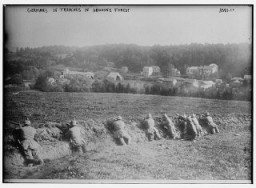
A US army field hospital inside the ruins of a church in France during World War I. France, 1918
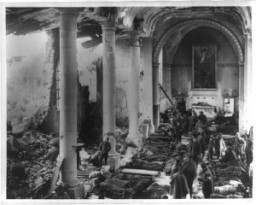
This 1919 photograph shows destruction in the leading business thoroughfare of Rheims after bombardment during World War I. Rheims, France, 1919.
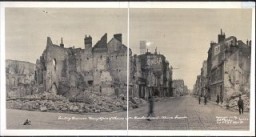
British troops at the site of a former German trench following the withdrawal of German troops to the Hindenburg line on the western front in World War I. This photograph shows a trench bridge over a German trench. Gommecourt, France, 1917.
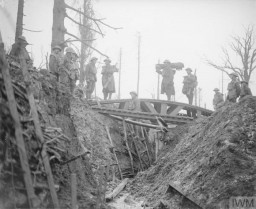
Pictured from left to right: Field Marshal Paul von Hindenburg, Kaiser Wilhelm II, and General Erich Ludendorff study maps during World War I. January 1917.
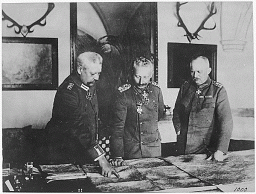
Scene of destruction during World War I: panoramic view of the battlefield at Guillemont, September 1916, during the Battle of the Somme. © IWM (Q 1281)

Houses along the River Meuse damaged during the Battle of Verdun, December 1916. The battle was one of the longest and deadliest of World War I. © IWM (Q 67594)
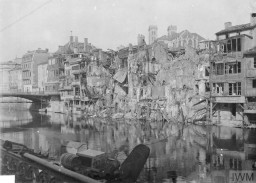
Surrounded by destruction, US soldiers of the 23rd Infantry fire a gun during World War I, 1918.
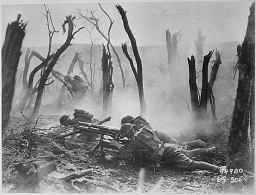
British troops in a trench cover the bodies of two fellow soldiers killed during the Battle of the Somme, November 1916. © IWM (Q 4393)
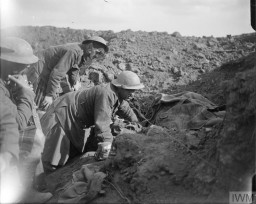
November 11, 1918. On this date, a negotiated ceasefire ends the fighting of World War I when it goes into effect at 11am.

Adolf Hitler (front row, far left) served on the western front in World War I and during the course of the war was twice decorated for service, wounded, and temporarily blinded in a mustard gas attack. He used his veteran status in later election campaigns.

Trench warfare is one of the iconic symbols of World War I. This photograph shows British troops carrying boards over a support line trench at night during fighting on the western front. Cambrai, France, January 12, 1917.
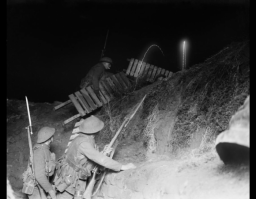
Germany started World War II in Europe on September 1, 1939, by invading Poland. War would continue until 1945. Learn more about WWII and genocide in Europe.
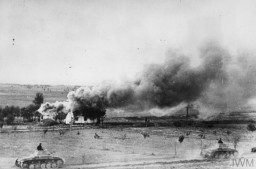
Germany started World War II in Europe on September 1, 1939, by invading Poland. War would continue until 1945. Learn more about key events in the history of WWII.
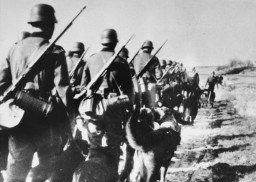
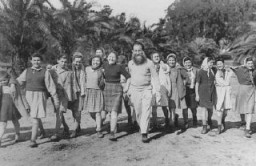
The 89th Infantry Division participated in major WWII campaigns and is recognized for liberating the Ohrdruf subcamp of Buchenwald in 1945.
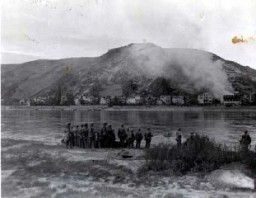
The 4th Infantry Division participated in major WWII campaigns and is recognized for liberating the Haunstetten subcamp of Dachau.
The 29th Infantry Division participated in major WWII campaigns and is recognized for liberating Dinslaken, a civilian labor camp, in 1945.
The 86th Infantry Division participated in major WWII campaigns and is recognized for liberating Attendorn, a civilian forced-labor camp, in 1945.
The 1st Infantry Division participated in major WWII campaigns and is recognized for liberating two subcamps of Flossenbürg in 1945.
The 26th Infantry Division participated in major WWII campaigns and is recognized for liberating the Gusen subcamp of Mauthausen in 1945.
The 36th Infantry Division participated in major WWII campaigns and is recognized for liberating some of the Kaufering subcamps of Dachau in 1945.
The 80th Infantry Division participated in major WWII campaigns and is recognized for liberating Buchenwald and the Ebensee subcamp of Mauthausen in 1945.
The 83rd Infantry Division participated in major WWII campaigns and is recognized for liberating the Langenstein subcamp of Buchenwald in 1945.
The 90th Infantry Division participated in major WWII campaigns and is recognized for liberating the Flossenbürg concentration camp in 1945.
The 82nd Airborne Division participated in major WWII campaigns and is recognized for liberating the Wöbbelin subcamp of Neuengamme in 1945.
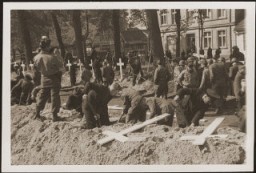
The 2nd Infantry Division participated in major WWII campaigns and is recognized for liberating Leipzig-Schönefeld and Spergau/Zöschen in 1945.
The 30th Infantry Division participated in major WWII campaigns and is recognized for liberating the Weferlingen subcamp of Buchenwald in 1945.
The 84th Infantry Division participated in major WWII campaigns and is recognized for liberating two Neuengamme subcamps, Hannover-Ahlem and Salzwedel, in 1945.
The 42nd Infantry Division participated in major WWII campaigns and is recognized for liberating the Dachau concentration camp in 1945.
We would like to thank Crown Family Philanthropies, Abe and Ida Cooper Foundation, the Claims Conference, EVZ, and BMF for supporting the ongoing work to create content and resources for the Holocaust Encyclopedia. View the list of donor acknowledgement.